
How to Write a Winning Business Case That Gets Approved: A Step-by-Step Guide for Project Managers
You’ve got a brilliant project idea.
That’s just the first step. Turning it into a reality requires approval from your leaders or stakeholders, and to earn it, you must prove why your idea deserves the green light.
Well, that’s where a business case comes in.
It brings your project to the table with logic that wins a confident “yes.”
Without it, even strong ideas never make it to execution.
In this guide, you’ll learn how to write a strategic business case that connects your vision to business goals and secures approval.
Let’s dive in!
What is a Business Case?
A business case is a project management document that outlines why a project or initiative should be executed.
Put simply, it explains the problem you’re solving, the solution you propose, and the value the project will deliver to the organization.
To make that clear, a business case includes:
- Objectives
- Benefits
- Costs
- Risks
Together, these elements help decision-makers answer one key question: “Should we invest in this?” And when your case delivers a strong answer, you win the approval.
When Should You Write a Business Case?
A business case is needed when a project requires meaningful investment or affects multiple teams.
Here’s when you should create one:
- Requesting budget approval for new initiatives
- Entering new markets or launching new products
- Making major investments like software upgrades
- Comparing multiple solutions before deciding
- Working on projects that require cross-functional collaboration
Usually, the best time is during the project initiation phase, before the detailed planning phase begins.
At this stage, you are estimating costs and benefits, reviewing risks, and securing leadership approval to move forward.
Also Read: 5 Phases of Project Management
Who Should Be Involved in Writing a Business Case?
Writing a business case is a collaborative process, where different team members bring their expertise to make it more credible and complete.
Let’s see who typically contributes:
Project manager: Leads the writing process by gathering data, analyzing information, and organizing everything into a clear, cohesive business case.
Project sponsor: Champions the initiative at the leadership level, validates strategic alignment, and often provides final approval before it goes to decision-makers.
Business analyst: Evaluates feasibility, conducts cost-benefit analysis, and helps define requirements and success criteria.
Finance team: Reviews cost estimates, ROI projections, and financial assumptions to keep everything accurate and realistic.
Subject matter experts: Provide specialized knowledge about technical requirements, compliance, or industry-specific considerations when needed.
Bonus Info: Together, these contributors form the core of your business case, but it’s equally important to keep key stakeholders in mind. End users and customers reveal the needs that justify your project, while decision-makers help you align your case with their priorities.
What’s the Difference Between a Business Case and a Business Plan?
Well, a business case and a business plan sound similar, but they serve different purposes. A business case justifies a single project, while a business plan covers the entire business strategy.
Here’s how they differ:
| Business Case | Business Plan |
| Justifies a specific project or initiative | Covers the entire business strategy |
| Focuses on benefits, costs, and risks | Includes market analysis, operations, and financial projections |
| Short- to medium-term, tied to one initiative | Long-term roadmap for the organization |
| Created during project initiation to secure approval | Developed to guide business growth and attract investors |
| A business case asks “Should we invest in this project?” | While a business plan answers “How will this business succeed long-term?” |
What Are the Benefits of Having a Business Case?
Building a business case takes effort, but the payoff is worth it. Beyond securing approval, it shapes how resources are allocated, managed, and measured throughout execution.
Below are the values it brings:
- Drives strategic thinking by making you evaluate whether an idea aligns with organizational goals before investing time and money
- Secures project stakeholders buy-in by demonstrating your proposal is well-researched, aligned with objectives, and worth supporting
- Enables data-driven decisions by providing concrete analysis that leaders need to assess feasibility and compare priorities
- Optimizes resource allocation by directing budget and personnel toward initiatives with the highest strategic value and ROI
- Identifies risks early so you can develop mitigation strategies before problems arise during the project lifecycle
- Aligns expectations by documenting outcomes, timelines, and responsibilities that serve as a reference throughout the project lifecycle
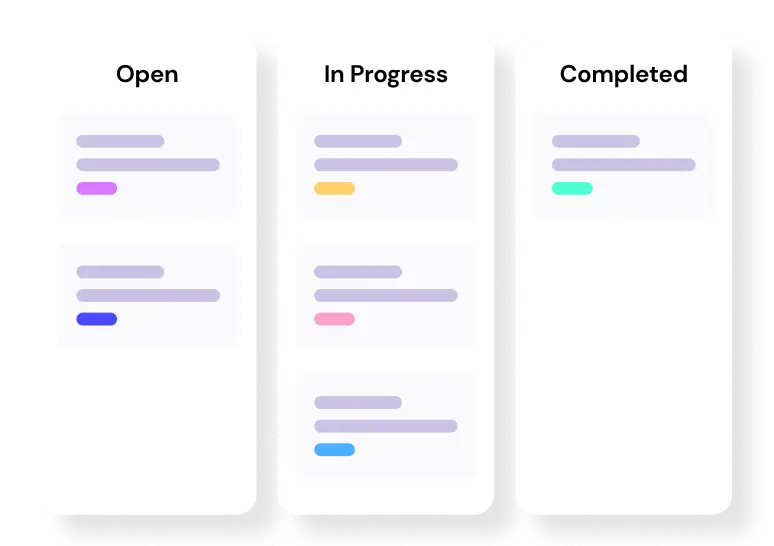
Level up your WordPress project management game with this Trello equivalent solution – where limitless possibilities come at an unbeatable price!
Key Elements of a Business Case Every Project Needs
A strong business case brings clarity and structure, combining the key elements that justify your project, guide decisions, and secure confident approval.
Here’s how these fit together:
Executive summary
A snapshot covering the problem, your solution, and expected value. Keep it brief and compelling so decision-makers grasp the essentials quickly.
Problem statement
Explain what issue you are solving and why it deserves attention now. Use data or real examples to show how this problem affects business goals and why action is needed.
Proposed solution
Present your approach and explain why it’s the most effective option. You can mention how it balances feasibility, cost, and results compared to other possible solutions.
Vision, goals, and objectives
Clarify what you’re trying to achieve and why it matters. Set clear project goals and measurable project objectives that guide your project’s scope and key deliverables, ensuring alignment with organizational priorities.
Benefits and ROI
Show the value your project delivers through cost savings, revenue growth, or efficiency gains. Use numbers to make the impact measurable and real.
Costs and budget
Break down the total cost of your project clearly. Include one-time and ongoing expenses so decision-makers can see exactly what resources are required and how the investment will pay off.
Risks and mitigation
Point out the main project challenges you might face and how you plan to handle them. This builds confidence that you’ve considered potential setbacks and have solid plans to manage them.
Implementation plan
Outline how you’ll move from approval to completion. Include major project milestones, responsibilities, and timelines so decision-makers can see how the project will progress in practical steps.
Project scope
Define the project scope by outlining all tasks and deliverables needed to reach objectives. Clear boundaries help stakeholders understand expectations and improve resource allocation and planning.
Stakeholder impact
Describe who your project affects and how. Address concerns from different groups upfront to build support and minimize resistance during execution.
Communication plan
Specify how, when, and what will be communicated to stakeholders. Regular updates maintain transparency, strengthen project collaboration and keep everyone aligned throughout the project lifecycle.

FluentRoadmap Comes Free with FluentBoards Pro!
How to Write A Business Case That Secures Approval
This is the moment to build a case that wins approval, or your idea may never launch. The key lies in how you identify the problem, evaluate solutions, and analyze costs and ROI.
Below is the process to create a business case that decision-makers trust-
Step 1: Identify the business problem
Each business case begins with clarity, so your first step is to define the exact challenge or opportunity your project addresses.
Start by defining:
- What issue does your organization face?
- What needs solving?
- What happens if nothing changes?
Be precise about the impact, whether it’s lost revenue, declining satisfaction, inefficiency, or missed opportunities.
Then, make sure you back up your claims with customer feedback, market data, or internal metrics, because stakeholders need to see the urgency and understand the consequences of inaction.
Pro tip: Focus on one core problem. Addressing too many issues in a single business case weakens your argument and makes it harder for decision-makers to see its true value.
Step 2: Identify alternative solutions
One solution might seem obvious, but decision-makers want proof you’ve done your homework. Evaluating alternatives shows you’re making an informed choice, not a rushed one.
Here’s how to do it step by step:
- List the possible solutions (don’t limit yourself too early)
- Quantify the benefits of each option
- Forecast the costs that come with them
- Assess the feasibility to see which ones are realistic
- Identify risks and challenges for each approach
- Document everything for a side-by-side comparison
Pro Tip: Include a “do nothing” option in your analysis. It forces you to prove why action is better than maintaining the status quo, and decision-makers often consider this baseline anyway.
Step 3: Analyze costs and ROI
After evaluating your options, the next step is understanding the financial side. Decision-makers won’t approve anything without seeing clear numbers.
Break down what this project will cost:
- Upfront investment (tools, resources, personnel)
- Ongoing expenses (maintenance, training, operations)
- Any hidden costs that might emerge
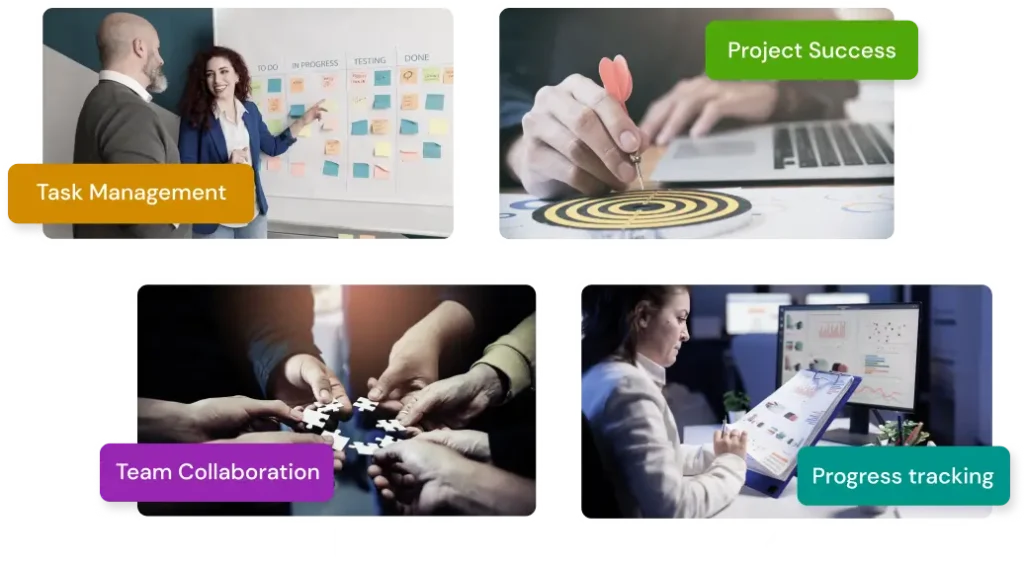
Step into the Future of Project Management!
Next, focus on the benefits. Will this project increase revenue? Cut costs? Improve efficiency? Be specific about what value it delivers.
Finally, show the return on investment and timeline. If benefits outweigh costs within a reasonable timeframe, your case becomes much stronger.
Pro Tip: Add the payback period, which shows how long it takes for the project to recover its initial investment. Decision-makers often use this as a quick way to compare and prioritize proposals.
Step 4: Assess risks and mitigation strategies
Risk is inevitable in any project. The difference between a weak business case and a strong one is showing you’ve thought through what could go wrong.
So, look at the obstacles you might encounter:
- Financial: Budget overruns or lower-than-expected returns
- Operational: Disruptions to workflows during implementation
- Market: Shifts in demand or industry trends
- Adoption: Resistance from project team members or stakeholders
For each risk, outline your mitigation plan: cost buffers, phased rollouts, or backup strategies. You won’t eliminate every risk, but showing readiness proves you’ve planned ahead.
Pro Tip: Use a risk matrix to prioritize which risks need immediate attention. Plot each risk by likelihood and impact to focus resources on high-priority threats first.
Step 5: Recommend your solution
Now it’s time to take a stand and recommend the solution you believe is best. Be direct about which solution you’re proposing and explain why it stands out.
Use your evaluation data to show how it performs against criteria like cost-effectiveness, feasibility, timeline, or strategic alignment.
Plus, a decision matrix or scoring system can strengthen your case by making the comparison visible.
The aim is simple: keep your reasoning transparent so stakeholders see exactly why this is the right way forward.
Pro Tip: When presenting your recommendation, address why you’re NOT choosing the other options. Decision-makers often want to know what you rejected and why, not just what you picked.
Step 6: Write and refine the document
At this stage, bring everything together into a complete business case. Organize content with clear sections and straightforward language so stakeholders can follow your logic.
Next, share your draft with key stakeholders for feedback, since their input often reveals gaps or areas needing clarification.
Then refine based on what you learn and prepare to present your case confidently to decision-makers.
Pro Tip: Keep an executive summary handy when presenting. Decision-makers often read this first, so make it concise, persuasive, and focused on measurable impact.
Step 7: Outline the Implementation Plan
Once your business case is approved, it’s time to execute. Organize all approved components into a centralized document where your team can access project goals, objectives, and scope in one place.
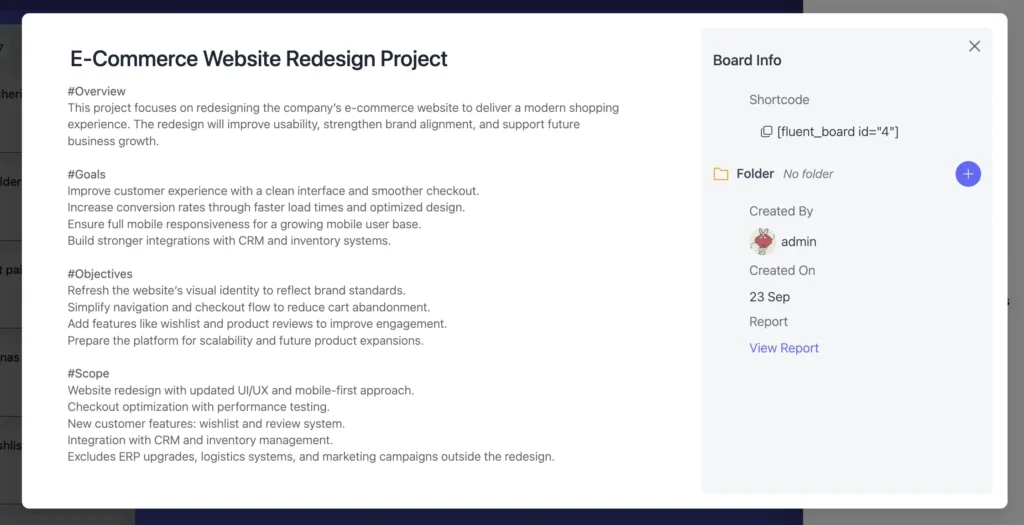
Then break down how you’ll make it happen:
- Key phases and major milestones
- Timeline with realistic deadlines
- Resources needed (budget, personnel, tools)
- Project team roles and responsibilities and ownership
Pro Tip: Make your implementation plan practical and achievable. A structured roadmap proves this isn’t just an idea but a plan ready to execute, and that’s what builds stakeholder confidence.
Business Case Template: Structure Your Proposal for Success
You’ve done the groundwork, now assemble it with this clear template that ensures your business case flows logically from problem to approval.
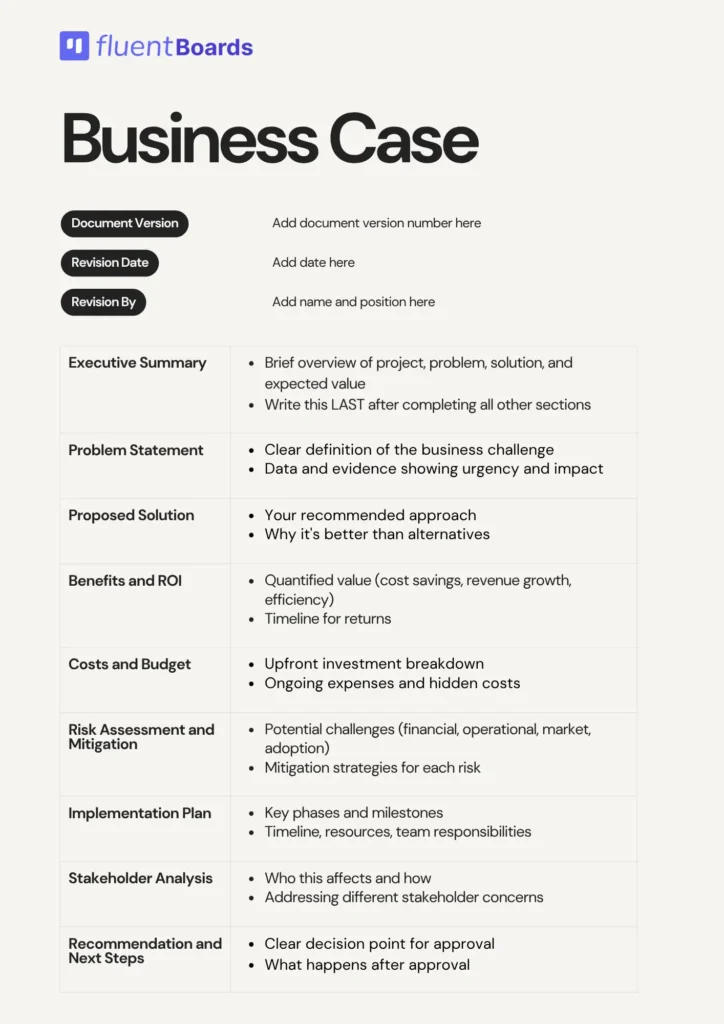
Common Business Case Mistakes to Avoid (and How to Prevent Them)
You’ve done the research, gathered the insights, and built your case. But small mistakes can still sink your proposal.
Here are the errors that cost approval and how to avoid them:
Getting too vague or generic – Back up claims with specific numbers, case studies, or measurable examples that demonstrate real impact.
Skipping financial details – Include solid ROI projections, cost estimates, and expected returns to prove financial viability.
Failing to align with company goals – Show how your project supports revenue growth, efficiency improvements, or strategic priorities.
Writing the executive summary first – Complete your full analysis before drafting the summary to capture all key insights.
Ignoring risks and alternatives – Address potential challenges and competing solutions upfront to demonstrate thorough preparation.
From Idea to Approval: Build the Case That Wins
You now have everything you need to write a business case that gets approved.
The success of a project often depends on how clearly you prove its value, resolve concerns, and align it with business goals.
Now, apply this framework to your next project, define the problem, compare options, show the numbers, and address risks upfront.
When decision-makers clearly understand your case, it earns approval faster and with less resistance.
So, are you ready to build your business case? Start today and turn your vision into action.
Let’s redefine project management with FluentBoards!
Get Tips, Tricks, & Updates
We won’t send you spam.









![how to create a project management workflow [x steps] (2)](https://fluentboards.com/wp-content/uploads/2025/11/How-to-create-a-project-management-workflow-x-steps-2-768x402.webp)




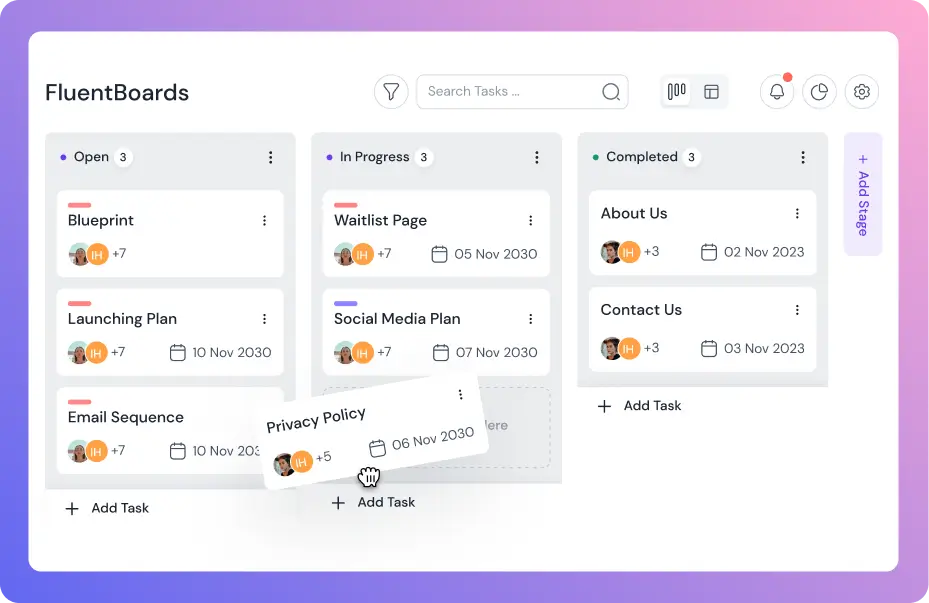
Leave a Reply